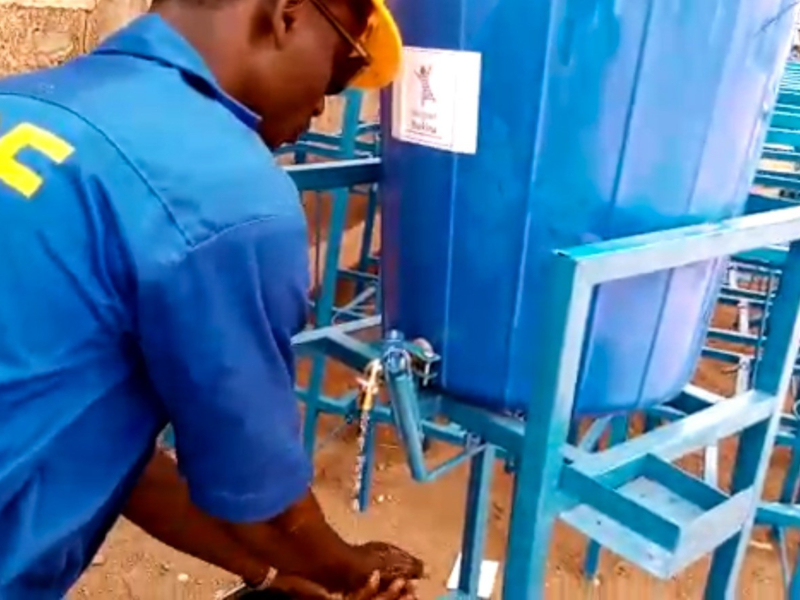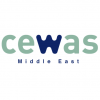WHAT IF... you reduced efforts to detect problems through remote sensing?
The Couch Potato strategy seeks to identify smart reporting mechanisms to eliminate unnecessary costs in the Operational Expenditures (OPEX) and Maintenance components of a water, sanitation or waste service. OPEX and Maintenance costs which are usually transferred to the customer in the form of higher tariffs can be minimised through a re-modelling of the Operations and Maintenance block of a company’s business model. When applied to the operational activities of a company, the Couch Potato strategy works by obtaining better data on the demand for their service in order to optimise its provision. When applied to the Maintenance of the service, the strategy creates an efficient reporting system to anticipate potential issues and detect problems as soon as they arise so that they can be dealt with faster and further risks and costs can be avoided.
Turning challenges into opportunities
One of the leading cost drivers for utility companies and businesses working in the water, sanitation and waste sector (although highly variable depending on the type of service and the initial capital investment) lies in Operations and Maintenance activities (hereafter O&M). (DAUDEY, L. 2018: 188; TRUSLOVE, J.P. et al. 2020)
Municipal waste management companies, for instance, spend a lot of resources in the operations of physically collecting waste – sometimes unnecessarily. Incorporating an innovative and efficient reporting strategy that allows waste to be collected only when necessary could reduce the number of collection trips and number of human and financial resources spent - as a result reducing operational costs. The same approach can be applied to the maintenance component of a service. Water, gas and sanitation service provision businesses for example spend large amounts of money fixing pipe leaks or infrastructure damage, as well as replacing faulty or old infrastructure. Many of these costs could have been eliminated altogether had there been a better and more efficient maintenance strategy in place which involved investing resources in prevention mechanisms. Inefficient O&M of services in the water, sanitation and waste sector do not only result in unnecessary costs transferred to customers but can also contribute to environmental degradation such as land and river pollution from waste and natural resource mismanagement, as is often seen with water. The current cost/value of global water loss for example, comes to around USD 39 billion per year and makes up 30 percent of total water system input (LIEMBERGER AND WYATT, 2018). In a world where water scarcity is an everyday reality for millions, these figures are alarming. These challenges in the O&M of services present an opportunity for entrepreneurs in the sector who can offer smart solutions for optimising O&M activities.
Moving towards a strategy
Whether you’re a utility struggling with O&M activities or your business provides O&M services to utilities, identifying ways to optimise and refine such activities can help you cut down costs in the long run and make you more financially sustainable. In order to decide where and how the Couch Potato strategy should be applied, you would first need to determine whether you are:
- Wasting resources on unnecessary or inefficient operational activities associated with the delivery of your service;
- Spending too many resources on the maintenance of your service; or
- Losing money and resources in most aspects of your O&M
In order to reduce costs and resources spent on operational activities, the Couch Potato strategy could serve as a way to optimise your operational activities through the incorporation of a reporting system between the service delivery point and the business. In the case of a waste collection service, this could for example consist of a reporting mechanism that allowed the company to obtain information on whether a bin is ready for collection or not. This reporting mechanism would look different depending on the resources at hand. Potential solutions include:
- A reward-based system where the customer informs the company by phone or text that a municipal waste bin is full and ready for collection. This is an example for a lean reporting mechanism that does not require high-tech solutions.
- Customers reporting the state of the bin through an app which notifies the nearest collection trucks. This option also needs to be reward-based and requires a few more resources for developing a well-functioning app and promoting its correct and continuous use.
- A sensor-based system detects whether a service was needed or not (in this case whether the bin is full or not).
It is important to note that these changes would result in additional costs for the business and a thorough budget and cost analysis would be required to ensure that the changes would ultimately lead to a greater cost recovery.
Applying the Couch Potato strategy to the maintenance side of your service would require a reporting mechanism that enables companies to identify and locate a fault or anticipate a potential issue in the service delivery chain in time. Sophisticated automated solutions to optimise maintenance can also result in a significant initial cost. In some cases, e.g. for unexposed infrastructure such as underground water and gas pipes, such investments can still prove to be the best solution (EL-ZAHAB, S. and ZAYED, T.:2019). In other cases, a simple mechanism in which the customer informs the company of a fault in the service through an easy reporting platform such as an app or a phone call (similar to the examples given for Operations activities), would be enough for addressing the issue before it led to other risks. The reporting system could go as far as to ascertain the priority and severity of the maintenance issue at hand. This would permit the company to better deploy the best solutions for the reported issue.
When designed and implemented according to the specific needs, resources and context of the company, this strategy not only reduces costs associated to the O&M of its services but also means that customers receive more efficient services with less interruptions (since problems are anticipated or dealt with more efficiently). It also means that service tariffs can be reduced, therefore serving as an incentive for customers to participate in the reporting of service failure or service need. This is particularly relevant when serving people at the BoP; reducing O&M costs instead of transferring them to the customers can help strike the right balance between affordability and costs of O&M – therefore helping in customer retention and overall sustainability of the business (TRUSLOVE et al: 2020). The benefits of the strategy expand beyond the customer-business sphere and can even result in positive outcomes for the environment and society as a whole. If wastewater infrastructure is well maintained or pit latrines are emptied when needed, for example, there will be less risk of aquifer or freshwater contamination and people falling ill from contaminated drinking water. The Couch Potato strategy is therefore a practical solution for reducing or altogether eliminating unnecessary or inefficient costs which are currently using up a big proportion of your resources. It can result in reducing unnecessarily high costs transferred to customers and can even contribute to solving some of our biggest socio-environmental challenges.
Tip: In some cases, establishing partnerships with central government, municipalities or even the private sector to receive funding or necessary resources to develop remote control or sensing systems could be an option to finance the development of your solution. This would require, however, that the objectives and interests of your company are aligned with those of the partner. Examples of such partnerships could involve funding for automated systems or simply helping in the dissemination of information to customers to underline their role as stakeholders in the strategy.
Case Study 1
Uduma is a private company that builds private-public partnerships with government entities or other public bodies to provide smart water pump services for un- or under-served rural communities at an affordable price. Through a context-specific and well-designed O&M strategy they manage to provide a reliable, sustainable and affordable drinking water service. They install water pumps that have a breakdown alert mechanism in place, allowing users to easily notify the maintenance team when there is an issue. This allows the maintenance team to seamlessly locate the pump and address the problem in a far more efficient way – resulting in shorter pump down-time and as a result higher customer satisfaction. Regular maintenance check-ups including water quality controls contribute to pump breakdown prevention as well as water-borne disease prevention. The company also has a smart payment system in which users use pre-paid electronic cards to pay for their water – allowing water consumption to be tracked and monitored in a cost-efficient way without users needing a bank card or mobile phone. Uduma is a good example of The Couch Potato strategy as it has recognised the importance of optimising O&M activities and use resources in a smarter way in order to reduce overall company costs, while at the same time providing a sustainable, reliable and affordable service.

Uduma customer using pumped water. Source: M.Marteau, Uduma (2020)
Case Study 2
GARV Toilets is an initiative in India that works with governments, NGOs and private actors in providing smart solutions to public sanitation challenges in the country – challenges which reverberate across the world, particularly in low-income communities. These include poorly maintained facilities, vandalism, lack of service upkeep etc. GARV Toilets sought to address some of these challenges by anticipating them and factoring them into the design of their business model. The public toilets they offer are claimed to be ‘indestructible’ since they are made from resistant materials such as steel, therefore reducing the risk of vandalism and subsequently reducing the costs of maintenance. The toilets are also integrated with smart tech features which allow the implementing company to get real-time updates of service usage and functionality, which in turn minimises the resources spent on O&M activities.
GARV Toilets is an excellent example of a business model that has recognised the importance of having a fully functional O&M strategy in place for cutting down on costs associated with the O&M of their service. It has measures in place to prevent service breakdown and uses smart technology as a service reporting mechanism that enables project implementing companies to respond more efficiently and accurately to service needs – eliminating unnecessary costs and resources and reducing overall costs associated with O&M activities. Since GARV Toilets targets people at the BoP, reducing O&M costs implies that usage fees for customers can be reduced, therefore striking the right balance between affordability and cost of O&M. They provide a service to people with low purchasing power (PP) who have little to no access to affordable services and therefore create a very positive social impact. The improved service functionality and reliability also contributes to customer satisfaction, which in turn also increases customer retention.
GARV Toilet Block. Source: GARV Toilets

